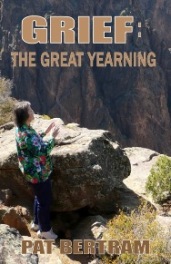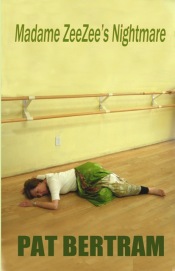I think a lot about safety, wondering how to be adventurous and bold while at the same time not embarking on a death march.
Human predators mostly look for the weakest member of the herd, someone who walks with their head down, someone that no one will notice if they disappear. To that end, I keep my head up, try to pay attention to what’s around me, and always wear a hat that makes me stand out. Wide brims with flowers,  ribbons, feathers — any sort of decoration that makes people look and smile. Seems like a silly sort of thing to do for protection, but getting people to notice me in a good way makes it harder for a predator to cull me from the herd. Not that I started wearing hats for that reason. The hats came first, the reason later. I wear hats for protection from the sun, and when I would get gorgeous ribbons on presents, I started decorating my hats with them. It’s nice that the extra bit of color makes people smile and me noticeable.
ribbons, feathers — any sort of decoration that makes people look and smile. Seems like a silly sort of thing to do for protection, but getting people to notice me in a good way makes it harder for a predator to cull me from the herd. Not that I started wearing hats for that reason. The hats came first, the reason later. I wear hats for protection from the sun, and when I would get gorgeous ribbons on presents, I started decorating my hats with them. It’s nice that the extra bit of color makes people smile and me noticeable.
When I was trying to decide whether to get a new car or get my Beetle restored, the deciding factor was safety. Admittedly, an old bug, even one with a new engine and transmission isn’t the safest car from a driving point of view, but from a predator point of view, it’s worth its weight in gold. Everyone notices my car. Not everyone talks to me, but everywhere I go, someone does, and that is protection. And if something were to happen to me, if I were disappeared from an interstate truck stop, someone would notice that my car was there way longer than it should be. Most cars don’t garner attention because most cars are common. But mine is an uncommon car of memories and dreams. And there is safety in that.
Although I blog about my adventures, giving frequent updates, I am particularly careful not to post itineraries online. After I’ve been somewhere, I will tell you about it, but I see no reason to leave a trail for predators to follow. For someone who lives her life online, I guard my privacy. (And you should too.)
I do other things of course. Carry an external battery good for four charges of my cell phone. I stash filled water bottles under my seat, carry extra food, keep my camping quilt and a pillow handy, have a flashlight near at hand, keep a few tools in the glove compartment, have an emergency kit in the car, and oh, so many other things.
When I’ve hiked by myself, I’ve carried a map, generally just a handout at a trail head or printed off the internet, but when/if I ever get into a real backpacking situation, I will make sure I have a topographical map and compass, and will know how to use them.
I’m researching other things at the moment, such as bear spray (which some people say is great, some people say no, some people say it’s illegal in areas) and a bear horn to scare the animal away if I were ever so lucky to see one. Knowing me, though, I’d probably do what I do when I see a snake — watch it in awe. But we’ll see what my research holds. (I’m more concerned with dogs, though. I’ve never even seen a bear when I hiked in the woods, but I have been bitten by someone’s unleashed dog because the stupid woman couldn’t control her three animals.)
I’m not foolish enough to say nothing will happen to me, because anything can happen, and often does. But that knowledge is a safety feature I carry with me at all times. Cockiness can get people killed. Caution can save lives. And I am almost always cautious. I listen to my surroundings, not music. I try to be present in the moment and not get lost in daydreams. I use two trekking poles to save my knees, to help me keep my balance on slopes, and hopefully to ward off anything that comes close.
All this is by way of saying that I do everything in my power to minimize whatever risks I might face, so that I can face adventure with wonder and a touch of boldness.
I understand how difficult it is to see someone you care about take risks, so I hope this makes you feel better about the risks I take.
***
Pat Bertram is the author of the suspense novels Unfinished, Madame ZeeZee’s Nightmare, Light Bringer, More Deaths Than One, A Spark of Heavenly Fire, and Daughter Am I. Bertram is also the author of Grief: The Great Yearning, “an exquisite book, wrenching to read, and at the same time full of profound truths.” Connect with Pat on Google+. Like Pat on Facebook.
























